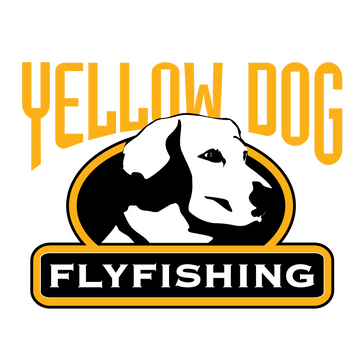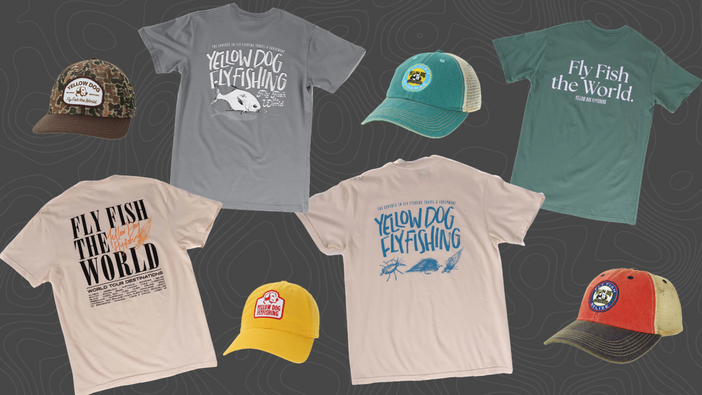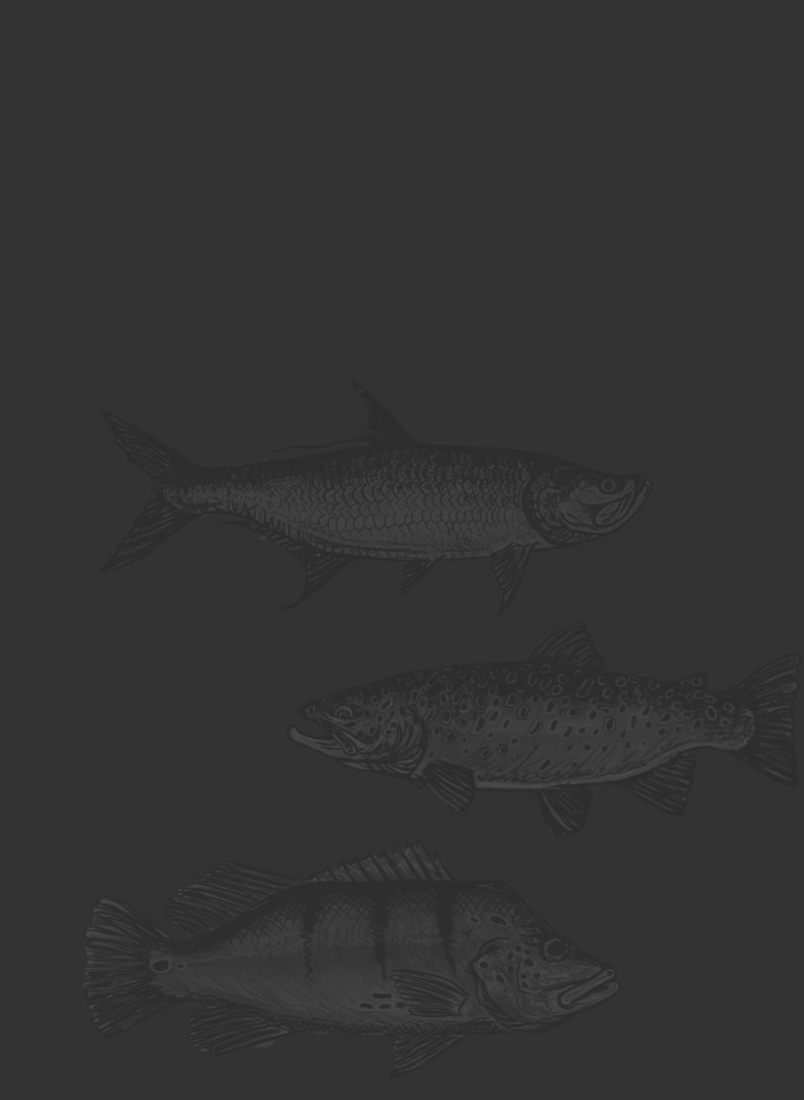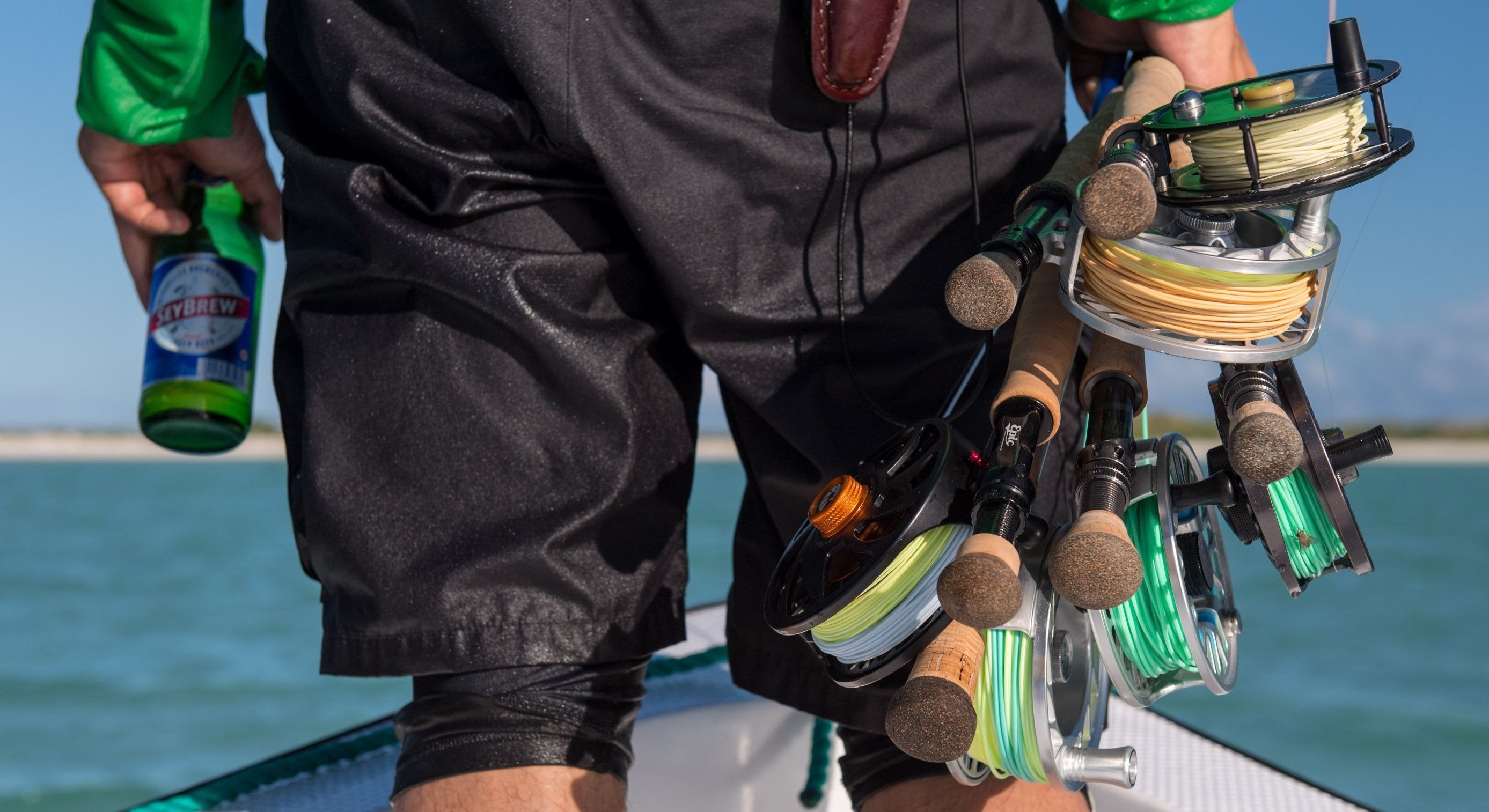Bonefish, mon! The Bahamas is known as the bonefish capital of the world. Throughout the islands of the Bahamas, lies a network of pristine water and a gigantic network of unspoiled flats. Amongst these islands are some of the planet’s most talented, knowledgeable, and hard-working fishing guides. Primarily a bonefish destination, many of the islands and their surrounding flats, are also home to tarpon and permit, along with barracuda, sharks, mutton snapper, mangrove snapper, and jack crevalle.
There are over 700 islands and cays in the Bahamas and nearly all of them could be home to fish. Only 31 are inhabited, so the list of where to fish is getting smaller. But, even with 31 islands, choosing where to head for your Bahamas fly fishing trip requires a little assistance. Yellow Dog is here to help.
The Islands of the Bahamas
Many of the islands of the Bahamas can be accessed via direct flights from the U.S. That means you could be leaving your home in the morning and casting to tailing fish in the afternoon.
Abaco
The Abacos are a group of islands and cays that form a 120-mile–long chain stretching over 650 square miles. The well-known Marls area of Abaco is easily accessible. The massive flats of the Marls are made up of hundreds of small mangrove islands, sand spits, creeks, inland lagoons and oceanside flats. The Marls have “inner” and “outer” areas, with each area serving up unique fishing opportunities.

The outer area is good for wade fishing while the inner marls remain protected from high winds and feature large schools of bonefish. These two options mean skilled and beginning anglers will find enjoyment on Abaco. Great Abaco Island and Little Abaco serve as the "mainland” and Marsh Harbour is the main town center. Domestic and international air service is available at Marsh Harbour and Treasure Cay.
Acklins
Known as one of the more remote islands, Acklins Island is almost as natural as it was two hundred years ago. Acklins is one of the least-visited and most productive fisheries in the Bahamas, about as far south as one can get and still be in Bahamian waters. The location of the island is important when you consider that weather patterns in this southern area are usually more consistent and warmer than other Bahamian islands, especially throughout the winter months.
The fishing on Acklins is typically on foot, although a few of the guides do have skiffs with poling platforms. The average bonefish in these waters runs two to four pounds and anglers will find themselves casting at larger fish on a regular basis. Domestic air service from Nassau is available several times a week.
Andros
All the Bahamian islands boast abundant natural attractions. But Andros—the largest, yet most sparsely developed of all the Bahamas—is king when it comes to exceptional natural surroundings. Here, you’ll find the world’s third-largest fringing barrier reef, which means the flats are protected and fishing options abound. Fishing on Andros is best divided into regions—north, middle, and south. All three regions are home to inland flats, creeks, bights, and mangrove lagoons. Guides in all regions of Andros are friendly, experienced, and can find fish in challenging conditions. The middle of Andros is unique because it has a substantial area of unexplored territory.

Flats and habitats here are acknowledged as one of the premier trophy bonefish areas in the world. It is also one of the top destinations in the Bahamas for tarpon and permit. The north coast boasts several wilderness zones and big bonefish, along with the possibility for resident tarpon as several freshwater blue holes drain onto the flats.
The southern part of Andros is home to an extraordinary number of tidal creeks and inland flats that provide incredible habitat for hungry bonefish of all sizes. With one of the most experienced guide staff in the area, the friendly and knowledgeable guides here are on par with any location in the world. Four airports serve Andros: San Andros International Airport, Andros Town Airport, Clarence A. Bain Airport, Mangrove Cay and Congo Town Airport. Frequent domestic and international service is available.
Crooked Island
Crooked Island is one of the least-visited and most productive fisheries in the Bahamas, about as far from Florida as one can get and still be in Bahamian waters. The location of the island is important when you consider weather patterns in this southern area are usually more consistent and warmer than other Bahamian islands, especially throughout the winter months. Bonefish opportunities here are abundant on vast white sand flats with average bonefish in these waters running two to four pounds, and larger fish can be found on a regular basis.

Permit can be found most of the year and guides here are learning more ways to catch these fish with each passing season. While this is not a prolific or consistent tarpon fishery, tarpon can be jumped and landed in the late spring and summer. Sharks and barracudas are also abundant on the flats, giving anglers additional opportunities and excitement. Domestic air service is available from Nassau.
Grand Bahama
Grand Bahama is an easily accessible island as several U.S. daily flights are available. But, despite Grand Bahamas proximity to the U. S. and ease of logistics, the fishing here is still as good as other islands in the Bahamas. The eastern horn of the island has five large bights that travel northeast to southwest.
Not only does this provide protection from the wind, but it also enables the guides to fish optimal tides throughout the day — a rare situation for any flats destination. Bonefish here can go up to 10-pounds and if the tides are favorable, larger than average permit are seen. Fishing on Grand Bahama is a mix of wade-angling and pursuing fish from the boat. While Grand Bahama is primarily a bonefish destination, barracuda, shark, and permit fishing can be productive throughout the year as well, making this a legitimate year-round option.
Long Island
Breathtaking cliffs, brilliant coral reefs, serene beaches, and flats with very little angling pressure, Long Island is home to it all. With very little angling pressure in this area, you can experience consistently good fishing on thousands of acres of untouched, uncrowded flats.

Along with having an extensive network of oceanside flats, the area also has an “inland locked” flats system which provides vast wading areas which are protected on even the windiest days. The guides here are hard-working and the bonefish are plentiful. For anglers that enjoy wading, there are two large lagoon areas located further north, Cape Santa Maria and Columbus Harbour. Not only do these areas provide great wading situations, but they’re also gorgeous with beautiful white sand bottoms and sapphire water surrounded by rocky cliffs.
Angling Calendar: Best Times of the Year for Bonefish, Permit and Tarpon in the Bahamas
-
Bonefish. Year-round.
Bonefish swim in Bahamian waters 365 days a year. However, knowledge of the angling seasons is important to being in the right places at the right times. Generally, the summer months and the warmer waters that come with them see less bonefish on shallow flats because the cooler and slightly deeper water just off the flats is more in their comfort zone. Large schools can be found, but they are typically mudding as a large group rather than tailing as individuals. Late June through August is the least-desirable season for bonefish in the Bahamas, but, if the bonefish are absent from the flats, the permit and tarpon may be around. -
Permit. May till mid-November.
Permit can be spotted year-round in the Bahamas, but late spring, summer and fall see the highest numbers of fish on the flats. The Bahamas are a growing destination for anglers interested in permit, but, bonefish still rule the roost so fishing for permit in the Bahamas can be expected at the right times of the year, but never guaranteed. -
Tarpon. May till mid-November.
Unlike Florida, Mexico and Belize, the Bahamas does not experience large runs of migratory tarpon. Resident tarpon exist throughout the islands but finding tarpon when bonefish are readily available and plentiful, takes a committed effort by both guide and angler. Guides on Andros probably have the most experience of the Bahamian guides chasing tarpon, and the summer months will serve up the best chance to cast to a Bahamian tarpon.
Trophy Bonefish: Best Time of the Year for Big Bones
Big bonefish can be seen throughout the year in the Bahamas, but the winter months often produce the largest bonefish. The larger a bonefish becomes the more they can adapt to changing water temperatures. January and February see cold fronts pass through and cooler water temps follow.

When this occurs, experienced trophy bonefish hunters follow suit and hunt the big ones. Seeing, stalking, and casting to a big bonefish is as challenging as any aspect of saltwater flats fly fishing and with January and February being cold and snowy in most of the US, it is a great time to chase trophy bonefish.
Non-Angling Companions: Where to Fish in the Bahamas with Non-Anglers
Activities abound in the Bahamas for non-anglers, but choosing the right destination is important. A brief understanding of the various islands is important. Smaller islands, such as Crooked and Long Island may work for non-anglers who want peace and quiet and an intimate lodge. Snorkeling, sea kayaking and relaxing walks may be all that is offered. Larger, more populated islands of Grand Bahama, Abaco, and Andros will offer similar smaller-island options but add to it sailing cruises, more expansive snorkeling or SCUBA trips, watersports like jet-skis or boat tours and possibly some shopping.

To seek out the best accommodations for non-anglers, it is best to contact us today and talk about options and amenities—the options are varied from family-run, small lodges to large-scale resorts with kid’s programs and swim-up tiki bars.
Bahamas Lodges: What to Look for When Choosing a Lodge
Fish camp or luxury lodge? Fly fishing in the Bahamas offers both and everything in between. Because Bahamians are welcoming and friendly in nature, any destination should have the expected level of service. So, then it is on choosing the best lodge based on the type of desired experience. Several lodges have wade fishing within walking distance, while others require a short vehicle shuttle to a dock to meet the guide.

Many of the larger resorts contract to independent local guides while the smaller lodges have worked with the same guides, or families of guides, for years. For meals and accommodations, the larger resorts may offer more traditional resort-style menus and amenities such as air conditioning. Rooms will have air-conditioning and menus will consist of burgers, chicken, and of course fish. But the smaller lodges at the more fish-centric destinations may only feature local cuisine that changes on a daily basis and rooms utilizing ocean breezes instead of central air.
Hiring a Professional Guide or Do-It-Yourself Trips
Do-It-Yourself (DIY) trips saw a surge a few years ago, but as anglers realized the increased success and education that happens upon hiring a professional guide, DIY trips have circled back around to only making sense for intrepid and exceptionally skilled anglers. While Yellow Dog Flyfishing Adventures has vast experience fly fishing the world, there are times when anglers can venture out on their own; we firmly believe hiring a guide for all, or part of a destination fly fishing trip, only enhances a trip.

The opportunities to fly fish in the Bahamas are as varied as the islands in this small nation. The Big Three—bonefish, permit, and tarpon—can be targeted on a regular basis, but bonefish reign supreme in the Bahamas. Whether you want high-end luxury, have non-angling companions or families, desire a family-run local lodge, or a mix of all of these, a fly fishing trip to the Bahamas with Yellow Dog Flyfishing Adventures can cover all of the bases while serving up consistent fly fishing action.
Related Articles:





























